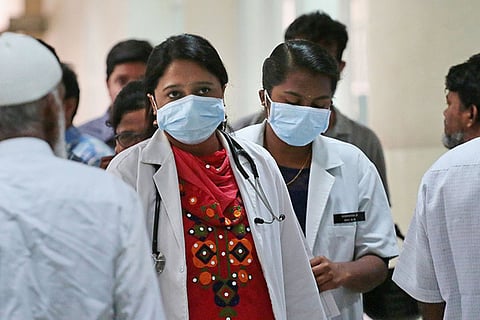

As of November 2, the case fatality rate (CFR) among COVID-19 cases in Karnataka stands at 1.4%. The case fatality rate is measured as the percentage of deaths per 100 COVID-19 positive cases. The national average is at 1.5%.
According to a section of experts, a lower CFR is a better indicator of COVID-19 management than the number of positive cases, as flawed testing strategies may ignore asymptomatic cases or simply, low testing may yield a lower number of cases.
Karnataka had a CFR of 1.8% in July and since then the state has seen a steady decline in its mortality rate. According to the State War Room report issued on November 2, the CFR for Karnataka is on the decline over the last 15 days, with the state recording an average CFR of 1.2%. The Union government has fixed a target of 1% CFR across the country.
TNM spoke to a few experts to understand how Karnataka has lowered its fatality rate. All of them agreed that high number of testing was one of the key reasons. Dr Pradeep Rangappa, an intensive care expert at Columbia Asia Hospitals and member of Karnataka’s Critical Care Support Team (CCST) said that the only large state that is doing better is Andhra Pradesh having a CFR of 0.8%.
“The numbers often tell the story. We can see that they (AP) are doing around 1.56 lakh tests daily, while we are doing something around 1.25 lakh. Otherwise, comparably Karnataka is doing well. We can’t really compare Karnataka with Kerala given that Kerala does not have a big city like Bengaluru with a dense population. So a large part of why Karnataka’s number looks good is due to the good work done in Bengaluru,” he told TNM.
He said a multilateral approach like good containment measures, high testing, tracing and standardised treatment protocols has seen Bengaluru achieve a much lower CFR compared to other metro cities in India.
“Even now, increasing the number of tests, tracing, tracking and containing still remains the quintessential part of pandemic management. All these are interlinked. Once we get a positive case, effort has to be put to find the vulnerable (elderly and persons with comorbidities) contacts first so that we can detect and treat them first and prevent any causality,” he added.
He explained that if a 20-year-old person tests positive, his parents and grandparents get the priority in terms of testing and treatment over his friends who are likely to be of the same age group. “This has been the part of our strategy where we are aggressively targeting the vulnerable population and this has been our ‘mantra’ and this has been reiterated time and again in our task force meetings,” he further said.
Dr Trilok Chandra, a senior IAS officer heading the COVID-19 Critical Care Support Committee, said, “Early reporting of cases has led us to treat patients early and increase the recovery rate. Moreover, treatment modalities had been fine tuned to a large extent throughout the state by April and constantly updated.”
Dr Trilok Chandra, as part of his role, is overseeing a tele-ICU (intensive care unit) facility run by the CCST who guide treatment of critical COVID-19 patients across the state.
“All the hospitals in the state including in Bengaluru were brought under this tele-consultation protocol through which both doctors and nurses were guided by an expert team to treat critical patients where every nuance was looked into and updated as we gained experience through the course of the pandemic,” he added.
Dr Sachinand, Vice Chancellor, Rajiv Gandhi University of Health Sciences, who is heading the COVID-19 death audit committee in the state, reiterated that the ramped up testing has given the state its intended dividends. “Early detection of cases has ensured that some cases never went to the critical stage and were treated successfully when they were mild,” he said.
He added, “ Monitoring of inflammatory parameters of the blood and according usage of steroids, adequate oxygen arrangements across the state has helped us lower the deaths.”